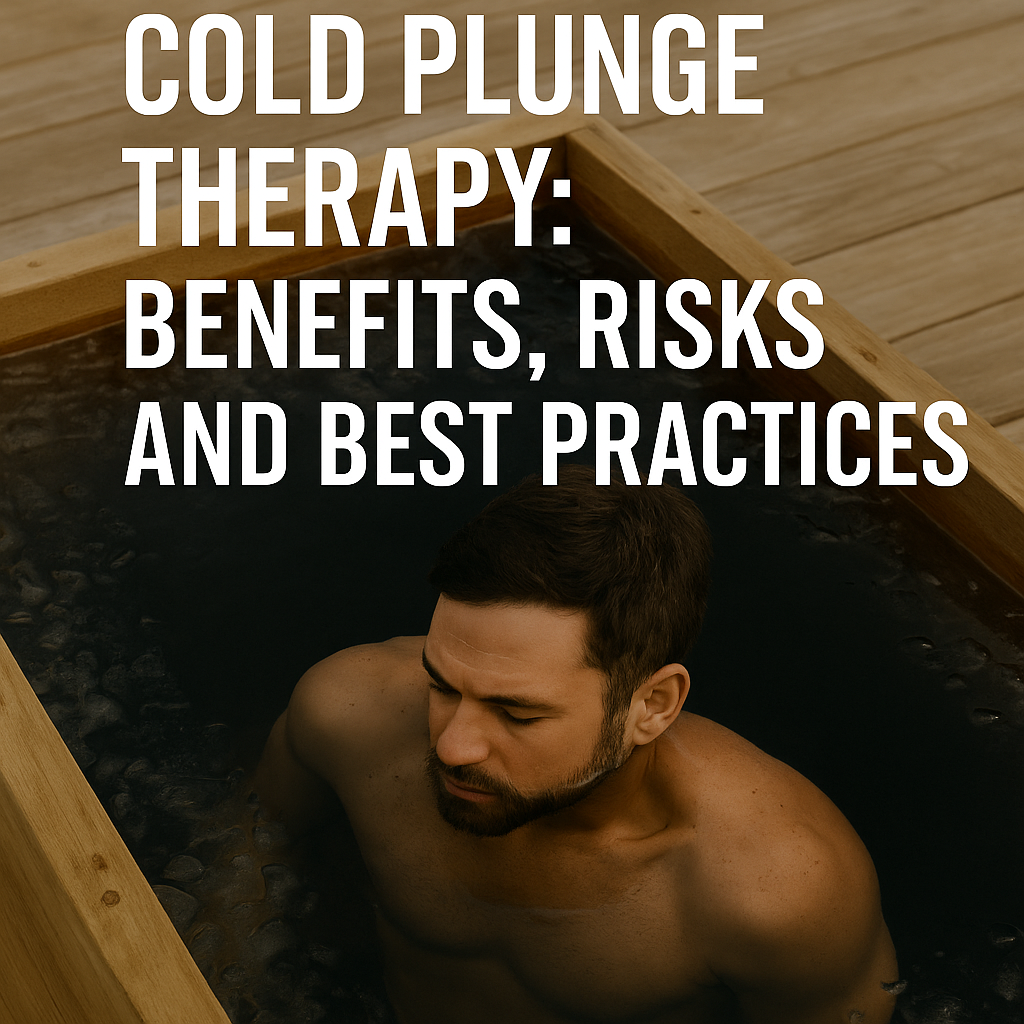
The Science of Cold Plunge Therapy: Benefits, Risks, and Best Practices
Share
Introduction: From Ancient Ritual to Modern Recovery Tool
Cold water therapy is not new—it’s ancient. From Scandinavian ice baths to Japanese misogi purification, cultures around the world have used cold immersion to rejuvenate the body and mind. Today, cold plunge therapy has re-emerged as a cornerstone of modern wellness, used by athletes, entrepreneurs, and everyday people seeking faster recovery and mental clarity.
Modern research confirms that cold water immersion triggers powerful physiological responses—boosting circulation, reducing inflammation, and supporting emotional balance. But how does it actually work?
1. How Cold Plunge Therapy Works
When you submerge yourself in cold water (typically 50–59°F or 10–15°C), your body reacts almost instantly.
Vasoconstriction: Blood vessels tighten, reducing blood flow to extremities and conserving warmth in the core. This helps flush out metabolic waste from muscles and promotes faster recovery once the body warms again.
Endorphin Release: The sudden temperature drop stimulates endorphins and norepinephrine, creating a sense of alertness and improved mood.
Thermoregulation Reset: Regular cold exposure strengthens the body’s adaptability, helping regulate temperature and manage stress more effectively.
Studies from the National Institutes of Health show that cold immersion activates brown adipose tissue, which helps convert fat into heat and may improve metabolic efficiency.
2. Proven Benefits of Cold Plunge Therapy
Muscle Recovery and Reduced Inflammation
Cold exposure helps decrease swelling and delayed onset muscle soreness after intense exercise. Many athletes use it to shorten recovery time and improve performance.
Improved Circulation and Heart Health
Alternating between hot and cold (contrast therapy) strengthens blood vessels and supports cardiovascular efficiency by promoting healthy vascular responses.
Boosted Immune Function
Cold exposure has been shown to increase white blood cell production and antioxidant activity. The body adapts to the stress by improving immune resilience over time.
Mental Health and Stress Relief
Cold water activates the vagus nerve, supporting mood regulation and reducing anxiety. The “post-plunge calm” many users describe comes from a natural dopamine surge that can last for hours.
3. Best Practices for Safe and Effective Cold Plunging
Cold plunging should always be practiced with care and attention.
Start Slow
Begin with 30–60 seconds at around 60°F (15°C). Gradually build up to two to five minutes as your tolerance improves.
Control Your Breathing
Slow, steady breaths help stabilize your heart rate and prevent the gasp reflex. Focus on deep nasal inhales and controlled exhales.
Listen to Your Body
If you feel dizzy, numb, or short of breath, exit the water immediately and warm up gradually with a towel or light movement. Avoid jumping straight into hot water.
Frequency
Two to four sessions per week are enough for most people. Consistency is more effective than duration.
When to Avoid Cold Plunging
Individuals with cardiovascular disease, uncontrolled high blood pressure, Raynaud’s syndrome, or respiratory issues should consult a doctor before beginning cold immersion.
4. Contrast Therapy: The Recovery Combination
Pairing cold plunges with sauna or steam therapy creates a natural pump effect in your circulatory system. Heat expands blood vessels, while cold constricts them. This alternating exposure improves circulation, supports muscle recovery, and deepens relaxation.
Sauna use is also associated with better cardiovascular health and reduced stress, making contrast therapy a balanced approach to whole-body wellness.
You can create a home wellness routine by combining a plunge tub with a sauna setup that suits your space and goals.
5. The Mind-Body Connection
Beyond its physical benefits, cold therapy is a mental discipline. The act of deliberately facing discomfort builds confidence, mental resilience, and emotional stability.
Research suggests that repeated exposure to mild stressors like cold water can improve the body’s ability to regulate mood and reduce symptoms of anxiety and depression over time.
Conclusion: Harnessing Nature’s Reset Button
Cold plunge therapy is more than a passing trend—it’s a natural reset for both body and mind. When practiced safely and consistently, it offers measurable benefits for recovery, energy, and emotional balance.
Whether combined with sauna therapy or practiced on its own, cold immersion is a powerful addition to any home wellness routine.
Sources
National Institutes of Health – Cold Water Immersion and Metabolism: ncbi.nlm.nih.gov/pmc/articles/PMC5025014
Cleveland Clinic – Ice Bath Benefits: health.clevelandclinic.org/ice-bath-benefits
Harvard Health – Sauna Health Benefits: health.harvard.edu/staying-healthy/are-saunas-healthy
Frontiers in Psychology – Cold Exposure and Mental Health: frontiersin.org/articles/10.3389/fpsyg.2018.00093/full

